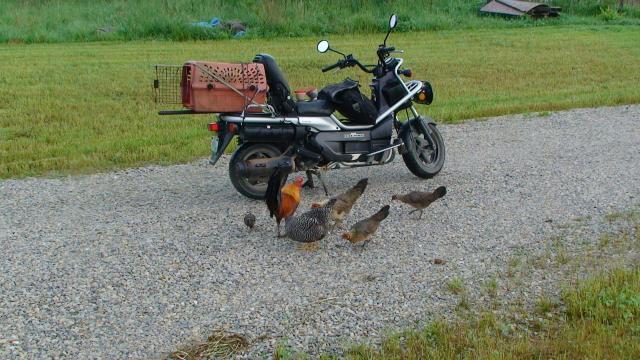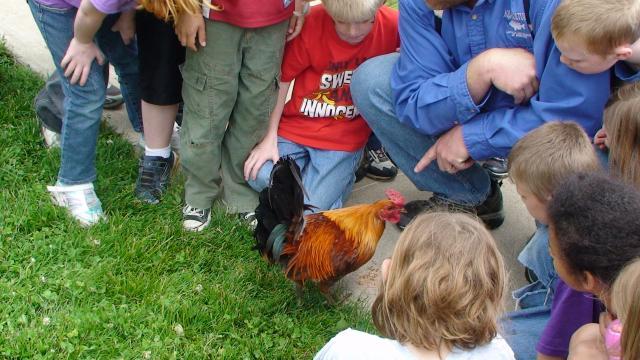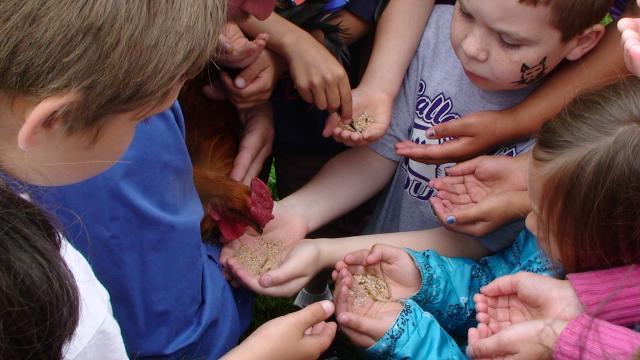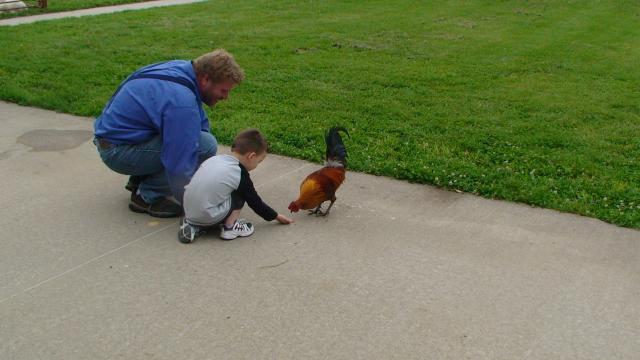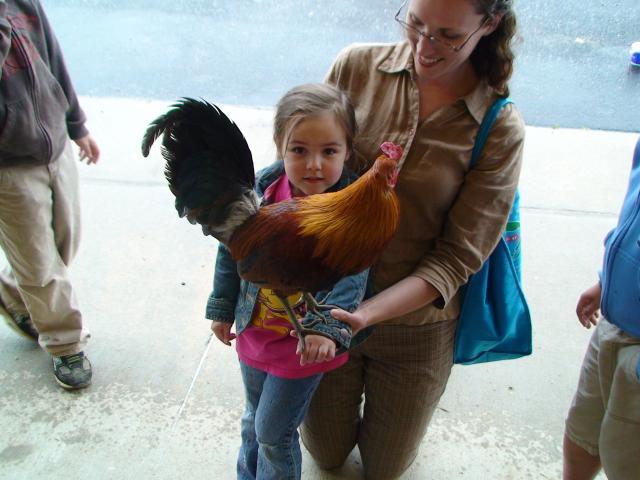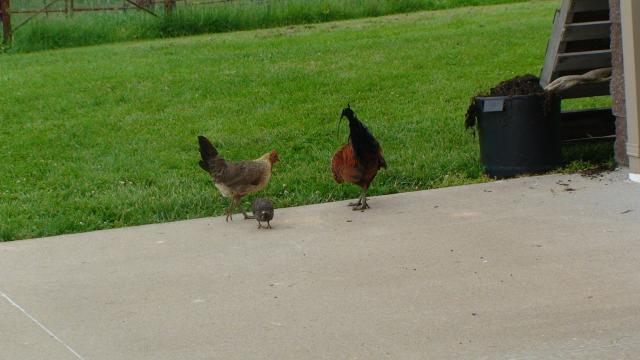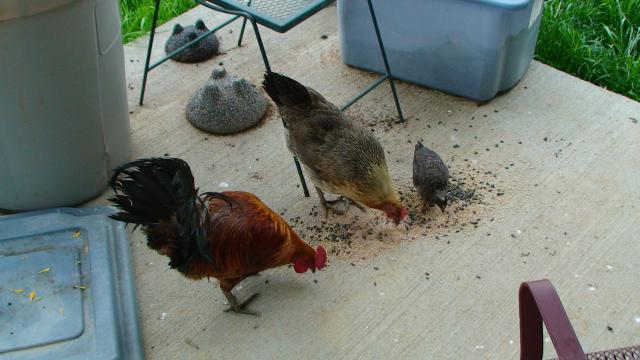I work at a land grant university where food production is a major concern. We have multiple annual demonstrations and shows concerning various aspects of agriculture and the research we conduct. My job is to attract kids, usually through petting zoos and like. Critters usually brought to pet are crawdads, tadpoles, big biting insects and sometimes really big fishes. This year trained chickens, juveniles about 12 weeks old were used. Two are birds being trained to come by voice command which they do. A gang of four were taken to a festival on campus to the "fairgrounds" and set loose near my usual attraction. Each time a small group was exposed to the usual round of smaller wildlife in the petting zoo, a chaser was made of calling name my trained chickens. One, sometimes two, would come cutting through crowd and fly up into my arm. We could even get birds to fly up into arms of kids that never came into contact with any type of bird prior. Eduardo and sister Sally were stars of show. They (birds) even impressed a couple old timers that raised chickens commercially. Once satiated, the chickens would even allow kids to pet them. It was not just a situation where chickens fed from hand but otherwise avoided contact. Sadly, one of the chickens ate my walking sticks while I was working with a group of kids. This use of chickens will be used in years to come.
Last edited:


